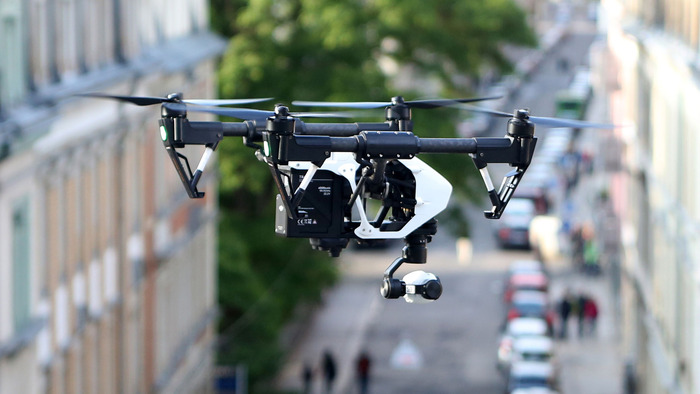In modern infrastructure, ensuring the safety and reliability of power substations is paramount. These critical facilities are pivotal in generating and spreading electricity to homes, businesses, and industries. Monitoring and maintaining these substations require vigilance and precision to prevent outages and ensure uninterrupted power supply. In today’s digital age, innovative solutions have emerged to enhance drones for substation monitoring, one of which is the utilization of drones.
Elevating Substation Surveillance
Traditional methods of substation monitoring often involve manual inspections, which can be time-consuming, labor-intensive, and potentially hazardous. However, drone technology has revolutionized this process, offering a safer, more efficient, cost-effective solution. Drones equipped with advanced sensors and cameras can navigate confined spaces and hazardous conditions with ease.
Their ability to capture high-resolution images and videos of substation components, such as transformers and circuit breakers, provides engineers with invaluable data. This aerial perspective not only enhances safety by reducing the risk to personnel but also improves operational efficiency, minimizing downtime and cost for utilities.
Aerial Precision
Utilizing drones equipped with advanced sensors and cameras, high-resolution imagery and video footage of crucial substation elements, including transformers, circuit breakers, and transmission lines, can be effortlessly obtained. This elevated viewpoint equips engineers and operators with essential data, facilitating the evaluation of critical equipment conditions and the early identification of potential issues before they intensify.
The capability of these drones to swiftly and comprehensively inspect substation components, irrespective of location or accessibility, underscores their significance in fortifying substation safety and minimizing operational disruptions. This technological innovation is instrumental in maintaining the integrity and functionality of vital power infrastructure.
Enhanced Safety
One of the advantages of using drones for substation monitoring is the enhanced safety they bring to the table. Rather than sending human operators into potentially dangerous environments, drones can easily navigate confined spaces, elevated structures, and even hazardous conditions. This reduces the risk to personnel and ensures that inspections are conducted without endangering lives.
Efficiency and Cost Savings
Drones not only improve safety but also enhance operational efficiency. They can complete inspections in a fraction of the time it would take human inspectors, minimizing downtime and operational disruptions. This increased efficiency translates into cost savings for utilities, as fewer person-hours are required to maintain and monitor substations.
Moreover, drones can perform inspections with a level of precision that is difficult for humans to achieve, reducing the likelihood of oversight and human error. Their ability to access hard-to-reach areas and capture comprehensive data further reinforces their role in streamlining substation maintenance processes, ultimately contributing to improved overall reliability and operational cost-effectiveness.
Environmental Benefits
Drones also have environmental benefits. They are typically electrically powered, producing fewer emissions than traditional inspection vehicles. This aligns with the global push for cleaner and more sustainable energy practices.
Data Analysis and Insights
In addition to collecting visual data, drones are equipped with sophisticated software to analyze the information gathered. ML algorithms can detect anomalies and patterns, enabling predictive maintenance. This means that substations can be serviced proactively, reducing the likelihood of unexpected failures and power outages.
Integration with Grid Management Systems
Integrating drones into a utility’s grid management systems delivers real-time data and insights, thereby enabling immediate decision-making and swift responses to emerging issues. This seamless integration not only streamlines operations but also contributes significantly to bolstering the overall reliability of the power grid.
By constantly monitoring critical components, drones ensure that potential problems are detected and addressed promptly, reducing the risk of power outages and enhancing the resilience of the grid. This proactive approach to grid management aligns with the industry’s commitment to providing uninterrupted power supply and maintaining the vital infrastructure that supports modern society.
Challenges and Considerations
While drones offer numerous advantages in substation monitoring, there are challenges to address. These include regulatory compliance, security concerns, and the need for skilled operators. Ensuring compliance with aviation regulations and protecting sensitive infrastructure from potential threats is essential to implementing drone-based monitoring systems.
The Future of Substation Safety
As the technology continues to advance, the capabilities of drones for substation monitoring. Advancements in automation, artificial intelligence, and battery technology are expected to enhance the efficiency and effectiveness of these aerial tools. In the coming years, one can anticipate even more sophisticated and intelligent drones that play an integral role in safeguarding our power infrastructure.
Conclusion
Drones have emerged as a game-changing product in the field of substation monitoring. Their ability to provide aerial precision, enhance safety, improve operational efficiency, and offer valuable data insights make them an indispensable asset for utilities and power companies. As one looks to the future, integrating drones into substation safety practices is set to become even more prevalent, ensuring the reliability and resilience of our power grids for generations to come.


